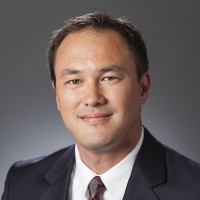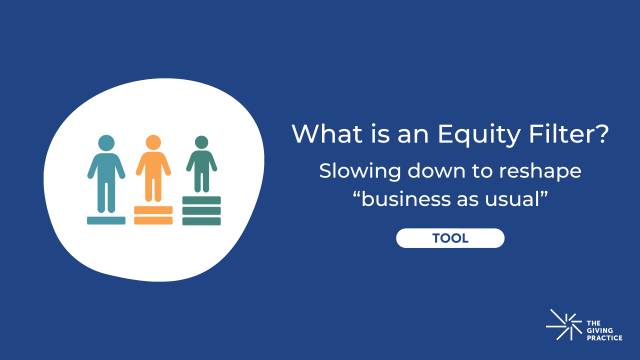
In a conversation for Philanthropy's Reflective Practices, Jan Jaffe spoke with Ryan Chao, vice president for civic sites and community change at the Annie E. Casey Foundation, about the importance of work-life balance, professional development and the importance of pausing to take stock of our work — individually and in teams.
Jan Jaffe: When we first talked about reflective practices late last summer, you offered a counter-intuitive personal practice to get some distance and perspective on tough challenges: press the pause button. I don’t think this came up just because we were both lamenting the end of summer.
Ryan Chao: Well, I’m sure that played a part! It’s also about coming to know your limitations and creating a space for seeing practice in a different way. I ran a large nonprofit for eight years when I also had young kids. Everything felt like life and death. Getting some distance helped me fully show up and make better decisions at work and at home. I’ve become a believer in the role of work/life balance as key to maintaining calm and perspective at work. Not being “in it” all the time helps me to remember that I’m not changing the world by myself.
Jan: We’re interested in learning how people develop their reflective practices. How did you learn to create explicit practices to stay effective in the fray?
Ryan: I had two fellowship experiences that introduced me to reflective practices as part of professional development. The year-long Achieving Excellence in Community Development run by NeighborWorks and the Kennedy School taught me about the adaptive/technical frame. I learned to step back from situations and take time to reflect – what they called “go up to the balcony.” Later, I was an Annie E. Casey Children and Families Fellow where reflective practices are core to the curriculum. In both cases, I learned some language and processes to help me view complex situations. I was assigned a coach and got some feedback on how I show up. It was invaluable to get feedback from someone who got to know me outside of the day-to-day. For many of these approaches, journaling is common. I’m not good journaler. I tend to overthink it. It was 1:1 coaching that helped me learn to ad lib.
Jan: How about your transition from the nonprofit to a foundation context? Do you use the same practices? Have you added others?
Ryan: When I first came, I thought this would be an opportunity to sit back and reflect, but, of course, philanthropy has its own urgency, risks and tensions. Our work in community carries with it an immediacy and intensity. And the work inherently carries with it complex political and relationship dynamics. Most useful for me has been to pay attention to whether a problem should have an adaptive or technical frame around it. I try to think carefully about which one is it. If it is technical, then we should be looking for proven approaches and techniques and concentrate on execution. If the problem is adaptive, e.g. complicated without a known solution and needing new learning and innovation, it will involve a different kind of engagement and feedback, and it will require both introspection and a broader consultative stance that requires us to be aware of our assumptions and bias as we try to help our partners get to the best outcomes.
Jan: The latter sounds like a lot of philanthropic challenges! Is there an example of an adaptive challenge you faced that led you to think differently about an approach that your team had originally taken?
Ryan: Place-based work inherently has at its core priorities in geographic-specific investments. In the last several years we’ve increased our broader systems-minded approaches when the programmatic work alone was not enough. For example, our workforce partners do great work but were frequently running into residents’ prior criminal records being a barrier to employment. We had to become more involved in criminal justice reform at the State level with such initiatives as the Ban the Box. It required expanding the frame we were in, listening to a broader constituency of organizations and finding the right points to influence policy. It seems obvious now, but that is because it has become visible and integrated.
Jan: What I’ve always found challenging is encouraging reflective practice as a team. Very little that I’ve ever accomplished is my work alone. And yet, its challenging to create that space. Have you had any success creating a micro-climate for reflective practice as a team?
Ryan: Our team is organized to effect change for people and place in education, workforce and housing. That means we are philanthropy practitioners with very diverse backgrounds working together and working with partners in the community with very diverse backgrounds. Perhaps because of this very multidisciplinary approach, we have to be able to question each other’s answers in order to fine tune our collaborative effort. We’re using three reflective practices to help the team share and problem solve with each other.
One is Emergent Learning from the firm Fourth Quadrant Partners. It is a helpful before-and-after action review technique.
Another related technique that has become really useful for us is the 30-minute peer consult. Staff bring a challenge, they describe it, everyone asks clarifying questions and then we all talk to each other about times when we have been in similar situations and the consultee just listens. We build space into each of our big team meetings for these peer consults. It has been really useful for whole group dynamics and culture in unexpected ways. We have a team that operates in different places and without doing “show and tell” we get to know what each other is doing and struggling with at work. It has helped create an environment for open sharing.
We have one other learning/reflection bonus: a former professor on our team suggests readings and reports to our team as a kind of a book club. We have a discussion for group learning that has helped to lift up other issues — personal or related to work — that stimulate reflection on practice.
Jan: You’ve illustrated a number of ways that reflective practices helped you and your team put their expertise into play. We have a hunch that this is philanthropy’s hidden “second discipline”—that, in addition to the first discipline of your content knowledge, you need a second discipline to apply that expertise, stay effective in the fray and get to better outcomes. Why has your team been drawn to reflective practices to do that?
Ryan: Many members of my team come from direct service. Reflective practice is part of their DNA and built into their prior training, and perhaps more commonly part of the culture in the social service sector. The fact that we as team members are truly interdependent in terms of getting the work done is critical. If one part isn’t succeeding, it affects everyone. We need each other.
For more information about Reflective Practices, please click here.



